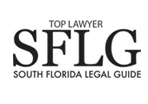What is condo insurance? Isn’t that taken care of by the HOA?
Most Floridians are well aware of the difference between owning a condominium and owning a single-family house. The owner of a house is responsible for everything that has to do with that property: the house and the yard, utilities, water and sewer, insurance, flood insurance … ad infinitum. The owner of a condo, however, is only responsible for maintaining the individual unit. The homeowners association takes care of the rest.
Condo owners pay monthly dues to homeowners associations to cover all the costs of maintaining common areas and common systems. The association pays for the yard work and painting the hallways. The association pays to maintain the pool. And the association pays for property insurance for the building.
Remember, though, the condo owner is responsible for everything inside his or her four walls. Generally, that means that the condo owner is responsible for protecting everything inside those four walls as well.
To determine what kind of coverage they need, owners should look at the association’s insurance policy — the master policy, in insurance-speak. If the policy is a “bare walls-in” policy, it covers everything outside of the unit’s four walls. If the policy is an “all-in” policy, it covers “fixtures, installations or additions” — kitchen appliances, bathroom fixtures, etc. — inside the unit as well.
One caveat: An association may tweak the coverage, so it is important that owners review the master policy and the association’s bylaws.
Condo insurance is, in a way, a cross between renters insurance and homeowners insurance. The condo owner needs to cover his personal property. Clothing, furniture, jewelry, artworks, curtains — as one agent put it, if you turn the apartment upside down, everything that falls out is personal property, or “content.”
Everything that stays inside the apartment is interior “structure,” and the condo owner may also need to insure that. Cabinets, carpeting, light fixtures are some examples of structure.
The objective, of course, is to cover everything that the master policy will not, and that may require a review of both the policy and the condominium association’s bylaws. Every situation is different.
Source: Bankrate.com
Share




